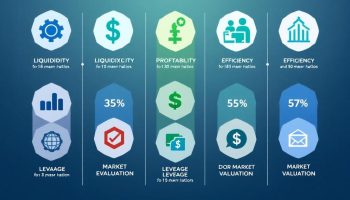
The Gramm-Leach-Bliley Act (GLBA) Risk Management Framework
The Gramm-Leach-Bliley Act (GLBA) risk management framework serves as an essential foundation for financial institutions striving to protect consumer financial privacy. This framework demands comprehensive data handling transparency across all operations. By implementing effective privacy notices, security measures, and regular risk assessments, organizations can successfully navigate consumer financial information protection requirements while strengthening customer trust.
Key Takeaways:
- Provide clear and conspicuous privacy notices to customers at account opening and annually
- Explain specific types of nonpublic personal information collected and how it is shared
- Clearly communicate customers’ rights to opt out of data sharing with non-affiliated third parties
- Develop systematic approaches to privacy notice distribution and updating
- Ensure transparency in data handling practices to reduce GLBA risk exposure
Financial institutions must deliver privacy notices that meet GLBA standards – straightforward, easy to understand, and accessible to customers. Your notices should detail exactly what information you collect and how you use it. This transparency forms the cornerstone of proper GLBA compliance.
Security safeguards need regular assessment and updating. These protections should match the sensitivity level of the information you handle. Modern financial data protection demands both technical controls and staff training programs that adapt to emerging threats.
Opt-out mechanisms deserve special attention. You must create simple, efficient systems for customers to restrict information sharing. Many institutions fail to meet compliance standards by making these processes overly complicated or difficult to locate.
Risk assessments should happen on a scheduled basis. Consider bringing in external security experts to evaluate your practices and identify potential weaknesses before they become compliance issues.
Data handling policies need documentation that clearly outlines responsibilities across your organization. Each department should understand their role in maintaining GLBA compliance, with accountability built into everyday operations.
Customer trust hinges on how well you implement these practices. Financial consumers today expect their personal information to receive the highest level of protection. Meeting these expectations through proper GLBA compliance creates a competitive advantage beyond simply avoiding penalties.
“The Gramm-Leach-Bliley Act empowers financial institutions to safeguard consumer privacy by prioritizing transparency and robust data protection measures. By embracing clear communication and systematic privacy practices, organizations can cultivate trust while navigating the complexities of consumer financial information management.”
Financial Privacy Rule: Transparency in Data Handling
The Financial Privacy Rule stands as a cornerstone of the Gramm-Leach-Bliley Act (GLBA) risk management framework. You’re required to provide clear and conspicuous privacy notices to customers at account opening and annually thereafter. These notices aren’t just regulatory checkboxes – they’re essential communication tools that build trust with your customers.
When crafting these notices, you must explain specific GLBA risk factors related to data handling. This includes detailing the types of nonpublic personal information your organization collects, how this data is shared, and with whom it’s shared. You must also clearly communicate your customers’ right to opt out of data sharing with non-affiliated third parties.
Key Privacy Notice Requirements
To properly manage GLBA risk in your privacy notifications, ensure they include:
- Accurate descriptions of information collection practices
- Clear explanation of how customer data is used internally
- Comprehensive lists of third parties receiving customer information
- Simple, straightforward opt-out instructions
- Contact information for privacy questions or concerns
The transparency mandated by the Financial Privacy Rule isn’t just about regulatory compliance – it’s about effective security risk and compliance management. When implemented correctly, these notices give your customers genuine control over their financial information.
You’ll need to develop a systematic approach to privacy notice distribution, tracking, and updating. Many financial institutions integrate these processes with their effective risk response planning to ensure consistency across all customer touchpoints.
Remember that GLBA risk management extends beyond just the technical aspects of data protection. The Financial Privacy Rule specifically addresses the human element by ensuring consumers understand their rights. This transparency requirement complements your technical safeguards by creating informed customers who become partners in protecting their own information.
| Timeline | Privacy Notice Action | GLBA Risk Mitigation Purpose |
|---|---|---|
| Account Opening | Initial privacy notice delivery | Establishes baseline data handling expectations |
| Annually | Updated privacy notice distribution | Informs of any policy or procedure changes |
| Policy Changes | Special privacy notice issuance | Alerts customers to material changes in data handling |
| Opt-Out Requests | Confirmation of opt-out processing | Documents compliance with customer preferences |
Your organization’s commitment to clear communication about data handling practices significantly reduces GLBA risk exposure while building stronger customer relationships.
Expert Insight: The Financial Privacy Rule mandates that financial institutions provide clear privacy notices, which serve not only as compliance tools but as essential elements in building customer trust. When drafting these notices, focus on accurately detailing your data collection practices, sharing policies, and customers’ opt-out rights, as transparency fosters informed partnerships in data protection. By adopting a systematic approach to the distribution and updating of these notices, your organization can effectively manage GLBA risks and enhance customer relationships.
Safeguards Rule: Comprehensive Information Security
The Safeguards Rule stands as a critical component of GLBA risk management, requiring financial institutions to implement and maintain comprehensive information security programs. You must establish strong protective measures to safeguard customer data from anticipated threats and unauthorized access. This rule applies to various financial entities including banks, credit unions, mortgage brokers, and fintech companies.
Your security program should encompass three essential safeguard categories. Administrative safeguards include developing robust security policies, conducting regular employee training, and creating incident response protocols. Technical safeguards involve implementing encryption for data transmission, establishing access controls, and utilizing multifactor authentication for enhanced security compliance. Physical safeguards require controlled access to facilities, secure hardware storage, and proper disposal methods for sensitive information.
The 2023 updates to the Safeguards Rule introduced stricter requirements to address evolving GLBA risk landscapes. You now need to conduct regular penetration testing to identify vulnerabilities in your systems and implement vulnerability scanning to detect potential security gaps. Additionally, you must appoint a “qualified individual” responsible for overseeing your security program implementation and maintenance.
Essential Security Program Components
To establish an effective information security program that addresses GLBA risk factors, you should:
- Develop comprehensive written security policies tailored to your organization’s size and complexity
- Implement regular risk assessment protocols to identify potential threats
- Establish access controls limiting data access to authorized personnel only
- Encrypt sensitive customer information both at rest and in transit
- Create incident response procedures for security breaches
- Conduct ongoing employee training on information security and effective risk response planning
- Monitor and test your security systems regularly
The consequences of non-compliance with the Safeguards Rule can be severe. Financial institutions failing to implement adequate security measures face regulatory penalties, reputational damage, and potential legal action from affected customers. By developing a robust security framework that addresses GLBA risk comprehensively, you’ll not only meet regulatory requirements but also build greater customer trust in your handling of sensitive financial information.

Pretexting Provisions: Preventing Unauthorized Information Access
The Gramm-Leach-Bliley Act’s pretexting provisions are vital components of your GLBA risk management strategy. These provisions specifically prohibit obtaining customer financial information through deceptive practices. You must implement robust safeguards to protect against increasingly sophisticated social engineering tactics that attempt to bypass your security systems.
Pretexting attacks typically involve bad actors who impersonate legitimate entities to extract sensitive financial information. Your financial institution faces GLBA risk exposure if you don’t adequately protect against these deception-based threats. Common pretexting methods include phone calls impersonating bank officials, phishing emails mimicking legitimate communications, and fraudulent information solicitation through seemingly benign requests.
To ensure compliance with pretexting provisions, you should develop comprehensive protection strategies:
- Implement multi-layered authentication protocols that verify identity beyond simple knowledge-based questions
- Create detailed procedures for handling information requests and verifying requestor legitimacy
- Establish regular employee training on recognizing and responding to potential pretexting attempts
- Deploy technical solutions that flag unusual account access or information requests
Your organization’s risk response planning must include specific protocols for pretexting prevention. This involves developing clear workflows for customer verification and establishing escalation procedures when suspicious activities are detected.
Employee education forms a critical defense against pretexting attacks. Regular training should include:
- Recognition of common social engineering techniques
- Proper handling of sensitive customer information
- Protocols for verifying customer identity before disclosing information
- Procedures for reporting suspicious requests or activities
Your security risk and compliance program should incorporate continuous monitoring for pretexting attempts. This includes reviewing call logs, analyzing email communications, and tracking unusual information requests. By integrating pretexting prevention into your broader GLBA risk framework, you’ll create a more resilient defense against unauthorized information access.
The financial consequences of pretexting violations can be severe, with potential fines up to $100,000 per violation and individual officers facing penalties up to $10,000. Beyond financial penalties, pretexting breaches damage customer trust and brand reputation—often with lasting consequences that extend beyond immediate regulatory concerns.
By prioritizing pretexting prevention within your overall GLBA risk management strategy, you’ll strengthen your institution’s resilience against increasingly sophisticated attempts to compromise financial data through deception.
Expert Insight: To effectively prevent unauthorized information access, financial institutions must prioritize compliance with the Gramm-Leach-Bliley Act’s pretexting provisions, which prohibit deceptive practices to obtain customer financial data. Implement robust safeguards, such as multi-layered authentication and regular employee training on social engineering tactics, to enhance your defenses against pretexting attacks. By integrating these strategies into your risk management framework, you’ll not only safeguard sensitive information but also protect your organization’s reputation and customer trust.
Risk Assessment: Continuous Security Evaluation
Ongoing risk assessments form the bedrock of effective GLBA compliance. You can’t protect what you don’t properly evaluate. A comprehensive GLBA risk assessment identifies vulnerabilities before they become breaches, helping you implement targeted security controls where they’re needed most.
Your risk assessment process should include thorough documentation of both internal and external risks to customer information. This includes evaluating how sensitive data flows through your organization, where it’s stored, and who has access to it. Regular scanning for vulnerabilities in your networks and applications helps detect weaknesses before they’re exploited by threat actors.
When conducting your GLBA risk assessment, pay particular attention to:
- Identifying all locations where nonpublic personal information (NPI) is stored
- Evaluating the effectiveness of current safeguards against evolving threats
- Assessing third-party vendor security practices and contractual requirements
- Reviewing employee training and access control policies
- Documenting potential impacts of security incidents on consumer privacy
Third-party vendor management requires special attention within your risk response planning framework. Many financial institutions use dozens or hundreds of vendors who may have access to sensitive customer data. Your GLBA risk management program must include thorough vendor due diligence and ongoing monitoring.
The rapidly changing technology landscape means you can’t treat risk assessment as a one-time activity. Your risk evaluation process needs to adapt to security risk and compliance changes in the financial services industry. Recent GLBA updates require more frequent and rigorous assessments with documentation of how you’re addressing identified vulnerabilities.
Financial institutions with the most effective GLBA risk programs have moved beyond simple checklist compliance. They’ve integrated GLBA risk considerations into their broader enterprise risk management strategy, ensuring that consumer data protection receives continuous attention at all organizational levels.
Organizations that conduct regular risk assessments are 50% more likely to identify vulnerabilities before they become security breaches.
cio.com
Compliance and Implications
Navigating GLBA risk requires more than just understanding the law—it demands a comprehensive approach to ensure your financial institution’s full compliance. The stakes are high, with potential penalties reaching $100,000 per violation for institutions and $10,000 for individual officers.
Your compliance strategy should address data handling throughout its lifecycle. You need to implement written information security plans that specifically define how customer data is collected, stored, and destroyed. These plans must be regularly reviewed and updated to address evolving GLBA risk factors in your operational environment.
Strategic Implementation of GLBA Safeguards
To effectively manage GLBA risk within your organization, consider these essential implementation strategies:
- Designate a qualified individual responsible for overseeing your GLBA compliance program
- Conduct regular employee training on handling nonpublic personal information
- Implement multi-layered security controls including encryption and access management
- Develop incident response procedures for potential data breaches
- Perform regular risk assessments to identify vulnerabilities in your systems
Third-party vendor management presents particular GLBA risk challenges. You must ensure any vendor with access to customer financial information maintains compliance standards matching your own. This requires thorough security risk and compliance assessments before engagement and ongoing monitoring throughout the relationship.
The benefits of robust GLBA risk management extend beyond avoiding penalties. You’ll gain improved customer trust, enhanced data security practices, and reduced likelihood of costly data breaches. As financial technologies evolve, your effective risk response planning for GLBA compliance becomes a competitive advantage.
Remember that GLBA risk mitigation isn’t a one-time effort but requires continuous attention. Regular audits of your compliance measures help identify gaps before they become violations. By treating GLBA compliance as an integral part of your operational framework rather than a regulatory burden, you’ll build stronger customer relationships while protecting sensitive financial information.






